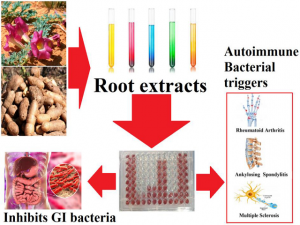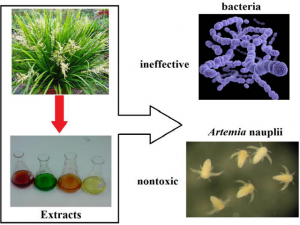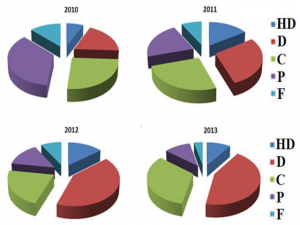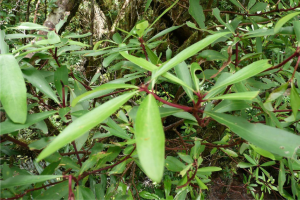
Exploration of Streptomyces hygroscopicus Secondary Metabolite Compound as a Development of Antimalarial Drug Candidate
Melinda Violita1, Ajeng Widyastuti1, Cahya Pandya Astami2, Rivo Yudhinata Brian Nugraha3, Uswatun Khasanah4,* 1Pharmacy Study Program, Faculty of Medicine, Universitas ...

A Look at the Role of Mucilage at the Industrial Level
María Paz Villegas Calero, Alejandro Esquivel Álvarez, Elías Quesada Morales, María Fernanda Rojas Salas, Marianela Chavarría-Rojas, German Madrigal Redondo* Instituto ...

Antibacterial Activity of Harpagophytum procumbens (Burch.) DC. ex Meisn. Root Extracts against Gastrointestinal Pathogens and Bacterial Triggers of Autoimmune Diseases
Alysha Bromley1, Ian E Cock1,2,* 1School of Environment and Science, Griffith University, Nathan, Queensland, AUSTRALIA. 2Centre for Planetary Health and ...

Extracts of Lomandra hystrix Labill. Aerial Parts Lack Antibacterial Activity and are Non-toxic in vitro
Getmore Rumbudzai Chikowe1, Lindiwe Nomathemba Mpala1, I E Cock1,2,* 1Environmental Futures Research Institute, Griffith University, Brisbane, Queensland, AUSTRALIA. 2School of ...

Improving Student Outcomes and Perceptions in First Year Biosciences by Enhancing Engagement: A Case Study
Ian Cock1,2,* 1School of Environment and Science, Griffith University, Brisbane, AUSTRALIA. 2Centre for Planetary Health and Food Security, Griffith University, ...

The Janus Corner
I E Cock1,2,* 1School of Environment and Science, Nathan Campus, Griffith University, Nathan, Brisbane, Queensland, AUSTRALIA. 2Centre for Planetary Health ...

Medicinal Plant Images
I E Cock1,2,* 1Environmental Futures Research Institute, Nathan Campus, Griffith University, Nathan, Brisbane, Queensland, AUSTRALIA. 2School of Natural Sciences, Nathan ...

Upcoming Events
Disclaimer: The following conference dates and details have been provided using currently available information. Due to the rapidly changing nature ...
